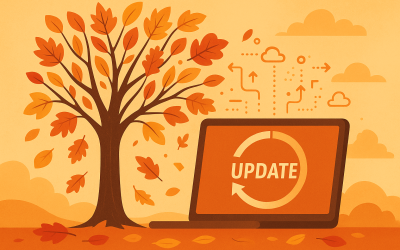ERP Implementation Failures: Horror Stories (and How to Avoid Them)
The Million-Dollar Nightmare Nobody Talks About
Picture this: You’ve just signed off on a major ERP implementation. The sales demos looked amazing, your team is excited, and you’re already imagining the efficiency gains. Fast forward 18 months… and you’re staring at cost overruns, frustrated employees, and systems that barely work. Here’s the thing nobody wants to admit: ERP implementation failures happen. A lot. And when they do, it’s not just a minor inconvenience; it’s a company-threatening disaster that can take years to recover from.
The Real Cost of ERP Implementation Failures
When Hershey’s ERP implementation went sideways in 1999, they couldn’t fill $100 million worth of Halloween and Christmas orders. Kids across America faced empty candy shelves, and the company’s stock took a beating¹.
More recently, Lidl abandoned their SAP project after seven years and €500 million invested—with nothing to show for it².
These aren’t isolated incidents. According to Panorama Consulting’s 2023 ERP Report, 55% of ERP projects exceed their budgets, and 60% take longer than expected³.
But here’s what really keeps me up at night: It’s not just the big corporations making these mistakes. Small and mid-size manufacturers are getting burned too, often with even more devastating consequences.
The Hidden Costs Nobody Warns You About
Beyond the obvious budget overruns, failed ERP implementations create:
- Employee burnout and turnover because nothing kills morale like broken promises
- Customer dissatisfaction when orders get delayed or lost
- Competitive disadvantage while you’re stuck fixing problems instead of growing
- Loss of institutional knowledge when frustrated staff members leave
Why ERP Implementation Failures Happen: The Uncomfortable Truth
After working with dozens of manufacturers through their digital transformations, I’ve seen the same patterns repeat. The problems usually aren’t technical—they’re human.
The “Shiny Object” Syndrome
You see a demo where everything works perfectly. The data is clean, the workflows are smooth, and the reports are beautiful. But that’s not your reality, is it?
Your data has inconsistencies from years of workarounds. Your processes have evolved organically (and sometimes illogically) over decades. Your team has their own way of doing things that actually works… most of the time.
The “One Size Fits All” Trap
ERP vendors love to tell you their system can handle everything. And technically, they’re right. But “can handle” and “handles well” are two very different things.
Manufacturing isn’t generic. Your shop floor processes, your supply chain relationships, your quality requirements—they’re unique to your business. Cookie-cutter implementations ignore this reality.
The Change Management Black Hole
Here’s where most projects die: You focus on the technology and forget about the people.
Your operators who’ve been running machines for 20 years suddenly need to navigate screens and enter data. Your production supervisors who managed by walking around now need to trust reports they don’t understand. Your customer service team has to learn entirely new workflows while customers are still calling with urgent orders.
Without proper change management, even the best technology becomes expensive shelf decoration.
How to Avoid ERP Implementation Failures
The good news? These disasters are preventable. But it requires a different approach than what most vendors recommend.
Start with Reality, Not Dreams
Before you even think about software selection, you need a brutally honest assessment of where you are today. What are your actual processes? (Not what the procedure manual says—what really happens on the shop floor.) Where is your data stored? How clean is it? What workarounds has your team created over the years?
This isn’t about judgment—it’s about building a foundation for success.
Design for Your People, Not Just Your Processes
The most successful ERP implementations I’ve seen prioritize user experience from day one. That means understanding how your team actually works and designing workflows that feel natural, not foreign.
Yes, some process improvements are necessary. But forcing dramatic changes while simultaneously introducing new technology is a recipe for resistance and failure.
Take a Phased Approach
I know, I know. You want everything working yesterday. But the companies that succeed take their time. They implement in phases, validate each step, and build confidence before moving forward.
Think of it like renovating your house while you’re living in it. You don’t tear down all the walls at once—you do it room by room, making sure each space is functional before moving to the next.
The Path Forward: Making ERP Work for Your Manufacturing Business
This article is not meant to scare you away from ERP. When done right, it can transform your business. But success requires more than just buying software. It requires understanding your unique situation, preparing your team for change, and having partners who’ve walked this path before.
The horror stories don’t have to be your story. With the right approach, your ERP implementation can be the competitive advantage you’ve been looking for, not the nightmare that keeps you up at night.
Ready to make sure your ERP project is a success story, not a cautionary tale? Let’s have an honest conversation about where you are and where you want to go. We’ll help you avoid the pitfalls and create a roadmap that actually works for your business.
![]() TSVMap is committed to enhancing your manufacturing processes and providing expert consultation on your IT solutions, striving to maximize their effectiveness and efficiency. If you require assistance with…IT Solutions, Assessment, Consultants, ERP Systems, MRP Systems, Automations, or Cyber Security. Contact us today at 864-991-5656 or Email info@tsvmap.com.
TSVMap is committed to enhancing your manufacturing processes and providing expert consultation on your IT solutions, striving to maximize their effectiveness and efficiency. If you require assistance with…IT Solutions, Assessment, Consultants, ERP Systems, MRP Systems, Automations, or Cyber Security. Contact us today at 864-991-5656 or Email info@tsvmap.com.
References
- Stedman, Craig. “Failed ERP Gamble Haunts Hershey.” Computerworld, November 1999.
- Hofmann, Klaus. “Lidl Scraps SAP Project After €500M Investment.” RetailX, July 2018.
- Panorama Consulting Solutions. “2023 ERP Report.” Panorama Consulting, 2023.









0 Comments